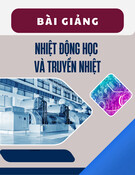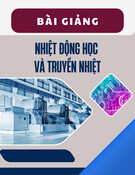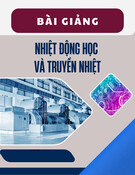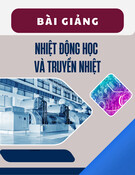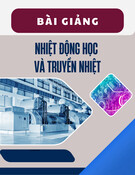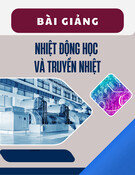
REGULAR ARTICLE
Metrology applications to D&D issues: issues at stake for INSIDER
European project
Danièle Roudil
1,*
, Marielle Crozet
1
, Sébastien Picart
1
, Ben Russell
2
, Margarita Herranz
3
, Sven Boden
4
,
Paolo Peerani
5
, and Laura Aldave De Las Heras
5
1
CEA, DEN, DMRC, University of Montpellier, Marcoule, France
2
Nuclear Metrology Group, National Physical Laboratory, Hampton Road, Teddington TW11 0LW, UK
3
Nuclear Engineering Department, University of the Basque Country (UPV/EHU), Pza. Ingeniero. Torres Quevedo, 1,
48013 Bilbao, Spain
4
SCK-CEN, DDW, Boeretang 200, 2400 Mol, Belgium
5
European Commission, Joint Research Centre (JRC), Directorate G –Nuclear Safety & Security, Rue du Champ de Mars 21,
1050 Brussels, Belgium
Received: 13 September 2019 / Accepted: 4 November 2019
Abstract. Nuclear metrology is an essential aspect to consider for further improvements of the initial
characterization of sites under decommissioning. The H2020 Euratom project INSIDER in June 2017 aims at
improving the management of contaminated materials arising from decommissioning and dismantling (D&D)
operations by proposing an integrated methodology for radiological characterization. This methodology is based
on advanced statistical processing and modelling, coupled with adapted or innovative measurement methods. A
metrological approach supports the qualification of this integrated methodology with a concrete application to
real projects representative of the use cases identified in the project. Assessment of the outcomes will be used for
providing recommendations and guidance resulting in pre-standardization texts.
1 Introduction
The Euratom treaty (1958) and the nuclear Non-
Proliferation Treaty (NPT) (1970) specify the modalities
of control and survey of nuclear materials.
Each step of the nuclear fuel cycle is concerned and has
to follow regulatory or customer requirements.
In the field of nuclear energy production and associated
fuel cycle, industrial recycling plants and R&D facilities are
subject to analytical monitoring to meet regulatory criteria
and to ensure secure facilities, appropriate waste storage
conditions and non-proliferating processes. Measurement
results are only truly comparable when they include a well
estimated uncertainty.
Control of nuclear materials is based on accurate
knowledge of the quantities and grades of nuclear material
present in the facilities and on material transfers between
facilities. This knowledge is obtained by direct nondestruc-
tive measurements as well as by destructive sample analysis,
which has the advantage of providing more accurate
measurements of the material quantities. Safeguards
verification is based on “operator-inspectors”comparisons.
New requirements are foreseen in relation to the likely
evolution of the nuclear context, including on the one hand
recycling of fuels with different compositions and on the
other hand nuclear material analysis prior to decommis-
sioning and dismantling (D&D) [1]. In this context,
European countries have to face and anticipate a big wave
of reactor and nuclear facility shutdowns. The implemen-
tation of the decommissioning operations will have a huge
impact on waste production, their cost and duration. An
international consensus already exists on the importance of
the characterization contributions from the front-end to
the back-end of the global decommissioning process [2,3].
A better understanding of measurement results and
their interpretation is indispensable to progress in new
approaches and methodologies. In this context, the
contribution of metrology becomes essential.
One of the principal missions of the CEA’s Committee
for the establishment of analysis methods (CETAMA) is to
promote best analytical practices in French and European
nuclear laboratories, providing metrology support, in
particular reference materials production and marketing,
interlaboratory comparisons organization and uncertainty
assessment [4].
CETAMA coordinates the European Euratom project
INSIDER (Improved Nuclear Site Characterization
for waste minimization in Decommissioning under
*e-mail: danielle.roudil@cea.fr
EPJ Nuclear Sci. Technol. 6, 17 (2020)
©D. Roudil et al., published by EDP Sciences, 2020
https://doi.org/10.1051/epjn/2019052
Nuclear
Sciences
& Technologies
Available online at:
https://www.epj-n.org
This is an Open Access article distributed under the terms of the Creative Commons Attribution License (https://creativecommons.org/licenses/by/4.0),
which permits unrestricted use, distribution, and reproduction in any medium, provided the original work is properly cited.

Constrained environment) which is devoted to the
development and qualification of integrated pre-character-
ization approaches, coupling sampling to on-site and in-lab
measurements with respect to operational decommission-
ing efficiency, safety and costs. Increased confidence in the
quantities and types of resulting waste is expected for
subsequent storage and disposal end-points. This article
illustrates the fundamental role that metrology can play in
making this approach reliable and qualified.
2 Metrological support in the nuclear field
2.1 Aims and purposes
At each step of the fuel cycle (including fuel fabrication and
spent fuel reprocessing, waste and effluent characterisation,
material control and safeguards,) an analytical control is
ensured by centralized industrial or R&D laboratories. One
of their missions is to guarantee the accuracy of analysis
results for:
–quality control of products;
–control of material flow;
–nuclear material follow up and accountancy;
–safety and Environmental controls;
–U, Pu flow balance.
Analytical requirements are established at national
levels and at European and international level by Euratom
and the IAEA.
The analytical process stands for all the steps between
the initial sampling up to the processing of the acquired
data, including any chemical pre-treatment of the samples
depending on the detection device chosen. Uncertainty is
quantification of the level of confidence in the measurement
result. Therefore the estimation of an uncertainty implies
the knowledge of the complete measurement process and its
influencing factors. Metrological tools, interlaboratory
comparisons, certified reference materials (CRM), stand-
ards and methods, are essential to achieve this objective in
a traceability approach perspective.
There is a wide range of uranium and plutonium
isotopic certified reference materials provided in Europe
mainly by JRC, NPL, PTB, CEA and radioactivity
activity CRM (CEA, NPL). Structured traceability
schemes is essential for the elementary and isotopic
analysis of radionuclides (Fission and activation products,
minor actinides, etc.) but difficult to set up as this requires
that metrology laboratories have adequate facilities for the
handling of nuclear materials. Some key institutes, such as
the IAEA and national nuclear institutes have developed
their own quality control tools.
The improvement of the certified reference materials
values and uncertainties is one of the challenges of chemical
metrology to face with future nuclear requirements. The
controls need to be supported by accurate and comparable
measurements which have to rely on reliable references.
Indeed, long-term credible comparability can only be
guaranteed by making all measurements traceable to the
same long-term stable references. The development of
nuclear CRM therefore has to be pursued and close
cooperation between Reference Materials Producers must
be strengthened.
The design of decommissioning and dismantling
operations generally requires a large number of specific
measurements and analyses. They must also allow the
assessment of the generated waste. Onsite measurements
are preferred for reasons of cost and speed. Laboratory
analyses are particularly relevant for Difficult to Measure
(DTM) radionuclides (RN). Considering the wide variety
of matrices and the large quantity of radionuclides
potentially present in the samples, development and
especially validation of improved measurement methods
are very challenging. Facing the quantity of nuclear
facilities to be shut down in the coming decades, this is a
major technological, analytical and metrological issue.
2.2 Metrological scheme
2.2.1 General considerations
The BIPM (International Bureau of Weights and Mea-
sures) is the international reference organization for the
world measurement system and aims to promote and move
forward global comparability of measurements. It is
supported by the International Committee for Weights
and Measures (CIPM) and its Consultative Committees
(CC).
The National Institutes of Metrology (NMI) and so-
called designated laboratories (DI) are national bodies in
charge of scientific and technical metrology in each
country. They rely locally on Regional Metrology Organ-
isations (RMOs). Their active members are the NMIs and
DIs of the countries that have joined them.
As an example, the RMO for the Europe region,
EURAMET (European Association of National Metrology
Institutes), currently comprises 37 countries.
In the frame of nuclear chemical and radiochemical
analysis, the principal missions of CETAMA, transverse
unit of CEA, since 1961 is to promote best analytical
practices in French and European nuclear laboratories,
with a view to validating, to evaluating and/or to
improving performances. It is also in charge of analytical
innovation support.
The general functioning of the metrology developments
and the CETAMA positioning is shown in Figure 1.
Based on a network of laboratories and experts
structured in working groups and on its own metrology
laboratory LAMMAN, the CETAMA provides reference
materials to meet the analytical needs and organizes
interlaboratory comparisons (ILC).
Realistic assessment of uncertainties results remains at
the heart of analytical issues.
While the metrological scheme for laboratory analyses
is well established, based on Certified Reference Materials
(CRM) and ILC, additional work remains to be done for on-
site measurements in the case of D&D issues.
These works are generally finalized by a common
synthesis of good practices and recommendations used as
reference documents.
2.2.2 Interlaboratory comparisons
Different types of interlaboratory comparisons exist
depending on the analytical objectives:
2 D. Roudil et al.: EPJ Nuclear Sci. Technol. 6, 17 (2020)

–proficiency testing (PT) to evaluate and compare the
laboratory performance scores;
–method validation comparison to evaluate the perfor-
mance of a specific method;
–certification to assess the reference value(s) and
associated uncertainty of a reference material.
Different techniques are widely used by the nuclear
laboratories, applying validated methods. To improve the
confidence in the analytical results, in particular their
methods trueness, PTs offer periodic monitoring and
evaluation of routine laboratory performance. European
bodies, such as JRC Geel, IAEA Nuclear Material
Laboratory (NML) for example, and at CEA, CETAMA
and LNHB organized periodically different kind of PT,
providing also laboratories with an opportunity to check
for possible deviations and if necessary implement the
necessary corrective actions.
The main advantages of PT interlaboratory compar-
isons are:
–the wide variety of matrices and analytes possibly
covered by these tests;
–the possibility of method performance comparison owing
to the fact of their number of exercises, and/or numerous
participating laboratories and compliance to standards
in force [6].
Availability of certified reference materials remains
complementary, because of some disadvantages of PT
compared to CRM:
–no mandatory warranties in terms of long-term stability
(outside the testing period) and traceability of the
reference samples;
–they shouldn’t be used for calibration.
2.2.3 Certified reference materials
Analysis laboratories rely on CRM for quality control of
measurements, for calibration of analytical instrumentation,
and for spiking of samples for elemental assay by isotope
dilution analysis, to evaluate and validate the performance of
their testing procedures:
–CRM (similar liquid, solid or gaseous matrix and liquid
isotopic tracers) so that laboratories can characterize
their method in real case;
–reference materials (RM) for precision;
–CRM for trueness.
In the field of nuclear fuel cycle, these CRM materials
are used for the monitoring of nuclear materials, process
controls, monitoring of the environment.
High chemical purity CRMs, reference solutions and
sources are more particularly suitable for calibrating
equipment and quality control monitoring.
Matrix CRMs are necessary to evaluate the perfor-
mance of methods in terms of trueness and precision.
However, to obtain traceable measurement results with
very low uncertainties, isotopic standards or spikes are
indispensable. Such materials are currently commercially
available for uranium and plutonium.
In Europe the main producers in the nuclear sector are
JRC Geel, IAEA, PTB, NPL, LEA and CEA. NIST and
DOE/NBL CRMs are also widely used in the laboratories.
The lack of suitable available CRM for D&D
applications has been identified. Some specific develop-
ments were supported through the European Metrology
Programme for Innovation and Research (EMPIR)
projects such as Metrodecom I and II in particular, for
an operational use of detectors.
CETAMA has offered different types of certified
reference materials for more than 30 years, (High purity
materials, matrix materials, isotopic composition).
The associated uncertainties of CRM certified value
found in certificate are of main importance regarding
calibration process and finally trueness of analysis results
[7,8].
Different statistical approaches are used to assess a
reference value: arithmetic mean, weighted mean, robust
mean and more recently the “Weighted mean and Excess
variance”approach recommended by the international
Fig. 1. Positioning of the functions of CRM producers and PT organisers in chemical and radiochemical metrology CETAMA
involvement. From [5].
D. Roudil et al.: EPJ Nuclear Sci. Technol. 6, 17 (2020) 3

metrology committee CCQM (Consultative committee for
amount of substance). Uncertainties are determined
accordingly [9].
2.2.4 Standards and guidelines
Industrial projects need validated analytical methods and
reliable measurement results, according to the standards in
force: a validated method is a standardized one or a well
characterized method in terms of trueness, precision, limit
of detection/quantification, based on CRM use and on ILC
participation.
Analytical method and reference methodological guide
establishments are main achievements of metrological
support of the CETAMA network, its WGs and sub-WGs.
The standardization of the laboratory good practices is a
main advantage considering time and cost of implementa-
tion. In this context different kind of RN analytical
methods can be commonly validated (i.e. CETAMA WG)
and proposed in support to standardization commissions
(ISO, French BNEN).
Concerning methodological guides, the sampling and
characterization ISO standard [10] devoted to the
dismantling of nuclear site is based on a methodological
report [11] applied to international decommissioning
project management, combining sampling and measure
after historical analysis. The power of geostatistical
approaches for initial and intermediate characterization
is highlighted through different examples and feedbacks
[12]. This standard describes a common approach of both
R&D and industrial laboratories, and project leader.
Methodological guides were also produced recently by
the WGs dedicated to analytical techniques, namely ICP,
nuclear measurements, and radiochemistry [13–15].
Follow-up of liquid and gaseous releases into the
environment or nuclear waste management may lead to the
problematic evaluation of detection limits [16] as a sum of
individual contributions. The guides of performance
assessment for cumulative results should enable the
laboratories to adopt a new common and reliable
methodology for the calculation of cumulative measure-
ment values, ensuring comparability and accuracy of the
results they provide to their customers.
2.3 Metrology perspectives
In the framework of D&D projects, analysts are facing new
technical challenges in terms of the number and size of
samples, new and numerous kind of matrices and
improvement of uncertainty evaluation.
The tools previously described and optimized in the
framework of nuclear fuel cycle analysis should be used and
adapted to these new problematics but also to regulatory
and financial new requirements.
Analytical techniques and method performances
are globally well studied and efficient tools exist for
their evaluation. In-lab DTM radionuclide analysis
methods would necessitate adaptation and improve-
ments taking into account matrix effects and the
potential interferents.
Most of these matrices are solid materials, which
increase the difficulties of RM certification due to the
homogeneity constraints to be respected.
Characterization of D&D worksites is mostly based on
different type of on-site measurement techniques. Equip-
ment calibration and method performances in representa-
tive environment is not easily controlled.
International organizations had also highlighted a lack
of guidelines and standards as well as feedback on past
decommissioning projects.
Last but not least, future challenges for D&D should
lead in sampling strategy and associated data treatment to
aim for efficiency at the right need and at the right cost.
The reliability of the data that will feed these models
becomes essential.
3 Application to the INSIDER project
3.1 D&D context and general methodology
The design of D&D operations is highly dependent on the
history of nuclear installations and the radionuclide
inventory implemented. These D&D projects are poten-
tially significant sources of radioactive waste (volume,
type, category, etc.) and their management remains a
technical, economic, financial and societal challenge and
therefore a major focus for optimization. In an environ-
Fig. 2. Use case 1 and use case 2 INSIDER worksite: Effuent tank from JRC ISPRA, and Biological shield of BR3 Mol reactor from
SCK-CEN.
4 D. Roudil et al.: EPJ Nuclear Sci. Technol. 6, 17 (2020)

ment constrained by the level of radiological activity or by
the size of a site, for example, the development and
validation of new sampling methodologies are necessary to
access the estimation of the initial composition and
volumes of contaminated materials in a shorter time and
at a lower cost. This data will have a direct impact on the
production of final waste and on the associated project
planning.
The resulting mapping should allow a simulation of the
radiological state of the facility (or components), corre-
sponding to the predefined analytical objectives, in
particular the level of accuracy required to support the
choice of options for scenarios. A realistic evaluation of the
performance of destructive and non-destructive methods of
interest is therefore essential.
The European project called INSIDER has been
accepted by the European Commission and launched the
1st of June 2017. INSIDER is coordinated by CETAMA
(CEA Nuclear Energy Division) and includes 18 European
partners from 10 member states [17]. In the frame of
metrology, three European NMI (NPL, CMI, LNE) and
one DI (LNHB at CEA) are partners of the project. An End
User Group (EUG) will provide user requirements and
feedback from the beginning of the project.
The project focuses on radiological characterization,
including the sampling strategy and sampling design,
through waste-led integrated approaches. Its objectives
are thus to improve the management of waste coming from
nuclear sites or facilities under D&D with medium (MA) and
high radioactivity (HA) levels and/or other constrained
environments with respect to operational decommissioning
efficiency, safety and costs. It will increase confidence in the
quantities and characteristics of resulting radioactive waste
in particular concerning subsequent storage and disposal end
points, and could lead to more reliable risk analyses.
The INSIDER strategy promotes an integrated and
overall approach of pre-decommissioning characterization,
which notably consists in evaluating historical data,
making on-site measurement campaigns, sampling and
analysing, developing scaling factors and applying numeri-
cal codes. Therefore, a strategy for sampling in the field of
initial nuclear site characterization in view of decom-
missioning, is offered to guide the end user to appropriate
statistical methods and approaches to use for data analysis
and sampling design [18]. A selection of available fit for
purpose measurement methods will be reviewed in the
frame of experimental benchmarks.
Many analytical innovative developments, particularly
for in-situ measurements, have been supported by national
and European projects in recent years in order to give
access more rapidly to measurement values or to provide
specific imaging tools adapted to different configurations,
constraints and analytical objectives.
At this stage and in parallel to encourage their
deployment on an industrial scale, it is necessary to be
able to upgrade them to higher Technology Readiness
Level (TRL).
In addition, the results of measurements are often
considered in a standalone approach as a step in itself. This
greatly limits the scope of the information collected. In situ
mapping in constrained environments is often a challenge
and accumulated approximations in a standalone approach
would have serious consequence that threaten D&D
project’s completion (waste over categorization, unexpected
contamination, etc.).
The reliability of a coupled approach as supported by
INSIDER necessitates an assessment of the performance of
measurement methods already available and without
necessarily any optimization.This task is a metrological task.
3.2 Metrology dedicated role in the project
The project aims at improving knowledge of the radiologi-
cal state of nuclear facilities under decommissioning
operations in constrained environments, i.e. with limited
data availability.
The heart of the technical innovative part of the project
is to improve the sampling strategy coupled to in-situ and
in-lab available techniques and methods, to take into
account different types of measurement data, with
different but known levels of accuracy [19].
Statistical approaches allow very complete simulation
and risk analysis based on in-situ and in-lab measurements.
To face the problem of radiological characterization in
constrained environments, where very limited amount of
available data is particularly challenging, and specific
statistical strategy needs to be implemented in order to
limit the variability and sensibility to outliers.
In-situ analysis techniques are of paramount impor-
tance for initial cartography. In constrained environment,
they must be complemented by more detailed off–site
measurements. Realistic knowledge of their performance is
important, without systematic optimization.
An essential consideration for the INSIDER project is
that it must be possible to demonstrate that any
measurements carried out to characterize the waste
materials are traceable to the international measurement
system. Such traceability enables nuclear sites to demon-
strate that measurements are accurate, fit for purpose and
scientifically rigorous, to give regulators and the general
public confidence in any results.
The main characterization challenges are thus:
–choosing suitable measurement techniques, well adapted
to sampling requirements or expectations;
–adapting to constrained environments of corresponding
in-situ and remote laboratory analysis techniques in a
cost effective perspective;
–increasing the reliability of characterization data and of
interpretation models.
Currently, real improvement of some analytical or
measurement methods is difficult due to the lack of suitable
reference materials. INSIDER will support the process
development and validation of specific common reference
materials and associated fabrication process.
According to previous Section 2, metrological tools
should apply on:
–validation and performance assessments of methods
•thanks to specific D&D matrix CRM developed within
the project;
–benchmarking on real worksites in D&D, consisting of in
situ measurement campaign for both a mapping and an
D. Roudil et al.: EPJ Nuclear Sci. Technol. 6, 17 (2020) 5

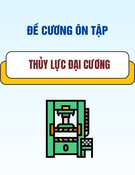
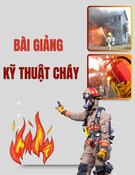
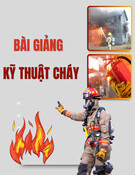
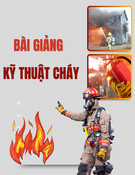
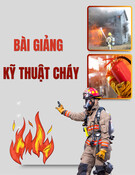
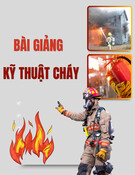
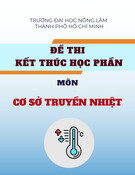
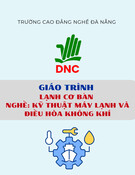
![Ngân hàng trắc nghiệm Kỹ thuật lạnh ứng dụng: Đề cương [chuẩn nhất]](https://cdn.tailieu.vn/images/document/thumbnail/2025/20251007/kimphuong1001/135x160/25391759827353.jpg)
